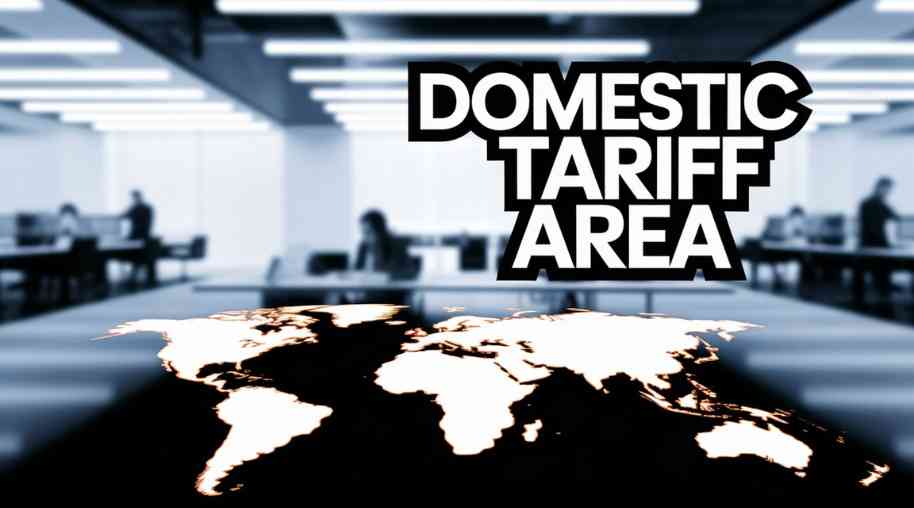DTA Full Form-Domestic Tariff Area
by Shashi Gaherwar
0 2525
Domestic Tariff Area (DTA): Meaning, Regulations, and Economic Impact
The Domestic Tariff Area (DTA) encompasses regions in a country subject to standard customs, taxation, and trade regulations, distinct from incentivized zones like SEZs.

This article explores the role, regulations, and economic significance of DTAs.
What is a Domestic Tariff Area (DTA)?
A DTA includes all areas outside SEZs, EOUs, and FTWZs, where businesses operate under standard tax and customs laws, supporting general trade.
Key Features of Domestic Tariff Area (DTA)
DTA characteristics:
- Taxation: Subject to GST, customs, and excise duties.
- Imports/Exports: Regulated with duties on imports.
- Compliance: Adheres to labor and environmental laws.
- No Exemptions: Lacks SEZ-like tax benefits.
- Market Access: Unrestricted domestic trade.
Difference Between Domestic Tariff Area (DTA) and Special Economic Zone (SEZ)
DTA vs. SEZ:
- Taxation: DTAs face full taxes; SEZs get exemptions.
- Imports: DTAs pay duties; SEZs import duty-free.
- Export Benefits: DTAs lack SEZ’s incentives.
- Regulations: DTAs have stricter compliance.
- Focus: DTAs support general trade; SEZs boost exports.
Trade and Business Operations in Domestic Tariff Area
DTA operations:
- Business Types: Includes manufacturers, retailers, and services.
- Trade Policies: Imports face duties; exports lack SEZ benefits.
- Industrial Hubs: Hosts SMEs and large industries.
- Taxation: Applies GST and corporate taxes.
Advantages of Domestic Tariff Area (DTA)
DTA benefits:
- Market Access: Free national trade.
- Opportunities: Supports domestic/international business.
- Incentives: Access to MSME subsidies.
- No Export Mandate: Flexible trade focus.
Challenges Faced by DTA Businesses
DTA challenges:
- Tax Burden: High duties and GST.
- Competition: Disadvantaged vs. SEZ units.
- Bureaucracy: Complex approvals.
- Costs: Elevated by regulatory compliance.
How Domestic Tariff Areas Impact the Economy
DTAs drive:
- GDP Contribution: Major economic activity.
- Employment: Creates millions of jobs.
- Industry Growth: Strengthens industrial base.
- Infrastructure: Boosts logistics investment.
The Domestic Tariff Area (DTA) is pivotal for economic development, hosting diverse industries under standard trade laws, fostering growth despite higher compliance costs.
Further Learning Resources
If you’re passionate about building a successful blogging website, check out this helpful guide at Coding Tag – How to Start a Successful Blog. It offers practical steps and expert tips to kickstart your blogging journey!
For dedicated UPSC exam preparation, we highly recommend visiting www.iasmania.com. It offers well-structured resources, current affairs, and subject-wise notes tailored specifically for aspirants. Start your journey today!

Share:








Comments
Waiting for your comments